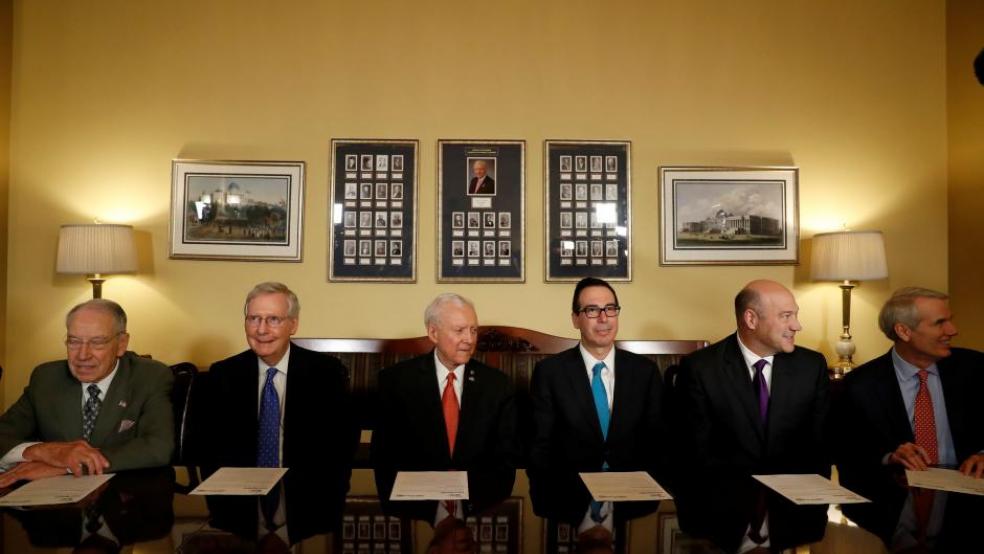Senate Republicans on Thursday released a tax plan that contains some substantial differences from the framework prepared by the Trump administration and the legislation now making its way through the House.
The differences highlight the challenges the GOP faces in trying to push through the most sweeping overhaul of the U.S. tax code in decades. If both the House and Senate pass their versions of a tax overhaul, Republican leaders in both chambers would have to reconcile the differences before President Trump could sign the bill into law. Republicans hope to have the legislation on the president’s desk by Christmas.
One huge hurdle the new Senate plan faces: As constructed, it may increase deficits beyond the 10-year budget window, meaning it can’t pass under reconciliation.
Here’s what the Senate bill does, and how it differs from the House:
- Delays cutting the corporate rate from 35 percent to 20 percent until 2019. The House bill would lower the rate immediately, and the proposed delay is likely to be contentious among Republicans.
- Creates a 17.4 percent deduction on tax rates for pass-through businesses, with some limits and exceptions, resulting in a top rate on business income of 31.8 percent, down from 39.6 percent today. The House bill creates a special 25 percent rate for pass-through businesses.
- Keeps seven tax brackets, compared with four in the House. The thresholds for the Senate plan’s brackets weren’t immediately available.
- Sets the top individual tax rate at 38.5 percent, down from the 39.6 percent in the House. That rate would apply to individuals making $500,00 or more, or couples making $1 million or more.
- Leaves the estate tax in place, but doubles the exemption to about $11 million per person. The House bill would repeal the estate tax after 2023.
- Fully repeals the deduction for state and local taxes. The House version keeps a deduction of up to $10,000 for state and local property taxes.
- Keeps the mortgage-interest deduction for home loans up to $1 million. The House had lowered the limit to $500,000 and ended the break for second homes.
- Sets the child tax credit at $1,650, up from $1,600 in the House bill.
- Keeps the existing deduction for medical expenses and a tax break for graduate students.
The Senate bill also does not call for a repeal of the Obamacare mandate that individuals buy health insurance or pay a penalty, a proposal that garnered consideration as a way to raise hundreds of billions of dollars to offset the cost of tax cuts.
One huge hurdle the new plan faces: It may increase deficits beyond the 10-year budget window, meaning it wouldn’t be able to pass the Senate in its current form.
Here’s a chart from Bloomberg summarizing the key differences:

This article has been updated to correct details of the Senate's plan for taxation of pass-throughs.





